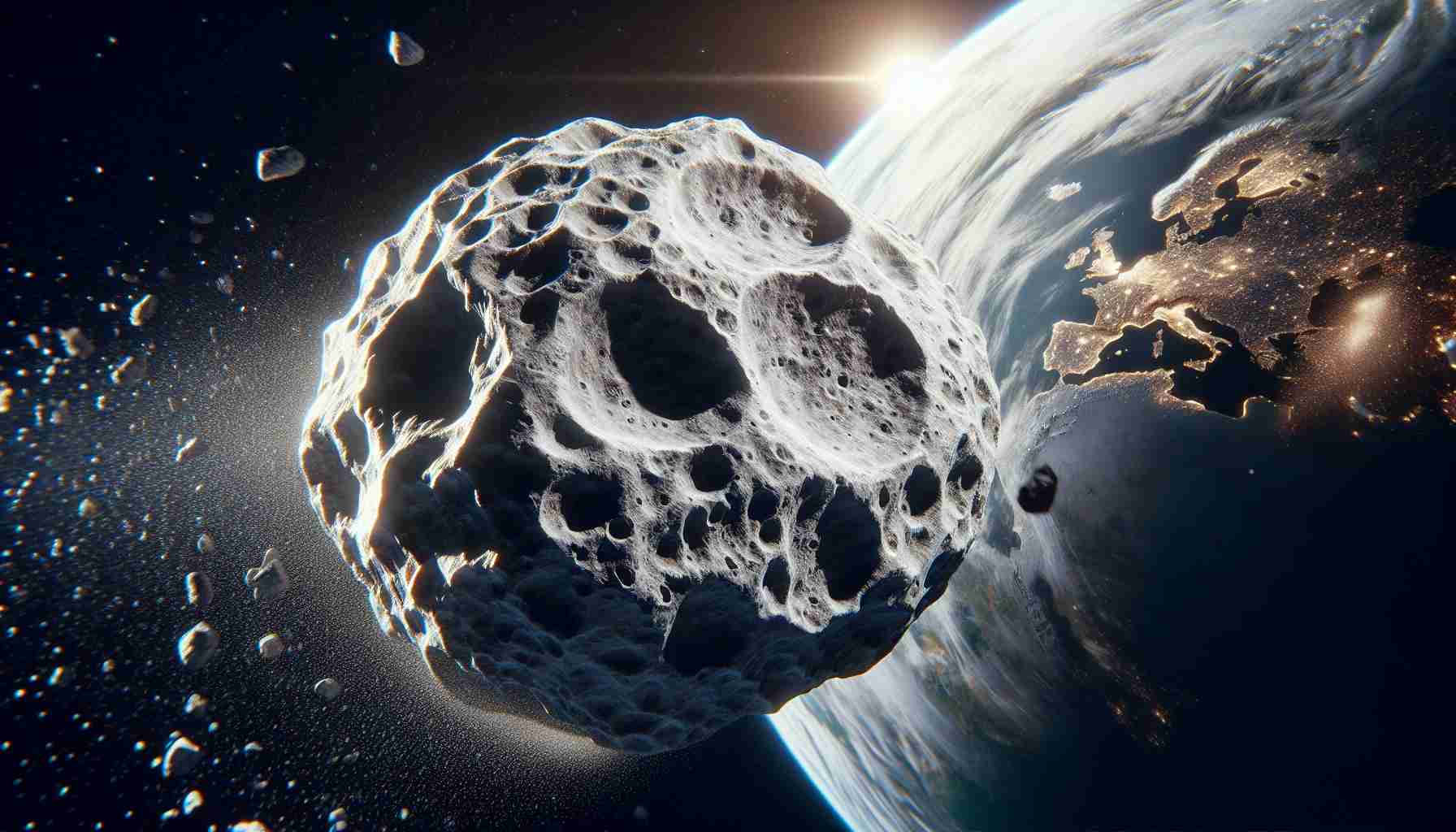- NASA has detected a potentially hazardous asteroid, Asteroid 2024 YR4, with a 1.3% chance of collision with Earth on December 22, 2032.
- The asteroid resembles the one that caused the Tunguska event in 1908, raising concerns about possible impact zones.
- Global discussions on asteroid threat mitigation highlight the need for a unified planetary defense strategy.
- Current technologies exist that could redirect asteroids, but ethical and legal considerations are being evaluated.
- Experts are examining the asteroid’s structure to develop appropriate deflection plans if necessary.
- Experts believe that if a collision were to occur, it would likely impact uninhabited areas, such as the ocean.
In an astonishing turn of events, NASA has detected a 100-metre wide asteroid—designated as Asteroid 2024 YR4—that could potentially collide with Earth on December 22, 2032. This celestial intruder, comparable to the one responsible for the devastating Tunguska event in 1908, currently holds a slim 1.3% chance of impact, igniting the alarms of planetary defense systems worldwide.
Discovered just two days after its close pass by Earth on December 27, this asteroid has thrown scientists into a frenzy, as they pinpoint possible impact areas ranging from the eastern Pacific to northern South America and beyond. While experts like Dr. Hadrien Devillepois are optimistic that further observations will confirm its safe trajectory, the uncertainty remains palpable.
Amidst discussions, Dr. Evie Kendal emphasizes the necessity for a global strategy to tackle potential asteroid threats. With existing technologies capable of redirecting a wayward asteroid, the ethical and legal implications of planetary defense measures are under scrutiny.
Professor Fred Jourdan advocates for a detailed analysis of the asteroid’s structure to formulate an effective deflection plan, should it come to that. Meanwhile, astrophysicist Jonti Horner reassures the public, suggesting that a collision, if it occurs, is likely to be spectacular yet harmless, primarily affecting vast stretches of uninhabited ocean.
The takeaway? Stay informed and calm—the chances of a catastrophic event are slim, but continuing observations will be key in the years ahead. Keep your eyes on the skies!
The Asteroid Crisis: What You Need to Know About 2024 YR4
Asteroid 2024 YR4 has recently come into focus after NASA’s detection of this 100-meter-wide celestial object, which is projected to have a slim 1.3% chance of colliding with Earth on December 22, 2032. While the likelihood of an impact remains low, the potential consequences of such an event mirror historical catastrophes, like the Tunguska event of 1908, heightening global interest in planetary defense systems.
Market Forecasts on Asteroid Detection Technologies
Innovations in space technology are set to revolutionize the way we detect and respond to potential asteroid threats. The global market for asteroid detection and risk assessment technologies is projected to grow significantly over the next decade, driven by advancements in sensors, surveillance, and satellite technology. Experts foresee a rise in investment in planetary defense initiatives and international collaborations.
Understanding the Potential Impact Areas
Current projections suggest that if Asteroid 2024 YR4 were to collide with Earth, the most likely impact zones could include vast areas of the eastern Pacific Ocean and northern South America. Further analysis of its trajectory will help refine these potential impact sites, emphasizing the importance of ongoing monitoring.
The Ethical Considerations of Planetary Defense
A growing concern among scientists like Dr. Evie Kendal is the ethical and legal ramifications of employing existing technologies for asteroid deflection. Strategies to redirect an asteroid could trigger international disputes, highlighting the necessity for a unified global framework for managing such threats.
Key Questions About Asteroid 2024 YR4
1. What is the current likelihood of an asteroid impact?
The likelihood of Asteroid 2024 YR4 impacting Earth is currently assessed at 1.3%, but this figure could change as more observations are made in the coming years.
2. What technologies exist to deflect an asteroid?
Current technologies include kinetic impactors, gravity tractors, and nuclear explosion methods, all designed to change an asteroid’s trajectory. Ongoing research aims to improve these techniques.
3. How can we prepare for a potential asteroid collision?
Average citizens can stay informed about potential threats through agencies like NASA, while governments can formulate emergency response plans and invest in asteroid monitoring systems.
Conclusion
In light of the discovery of Asteroid 2024 YR4, it is crucial to stay informed about potential asteroid threats and technological innovations aimed at planetary defense. While the odds of a catastrophic event remain low, the technological advancements and global cooperation will be vital in ensuring safety for future generations.
For more information, visit NASA.


















